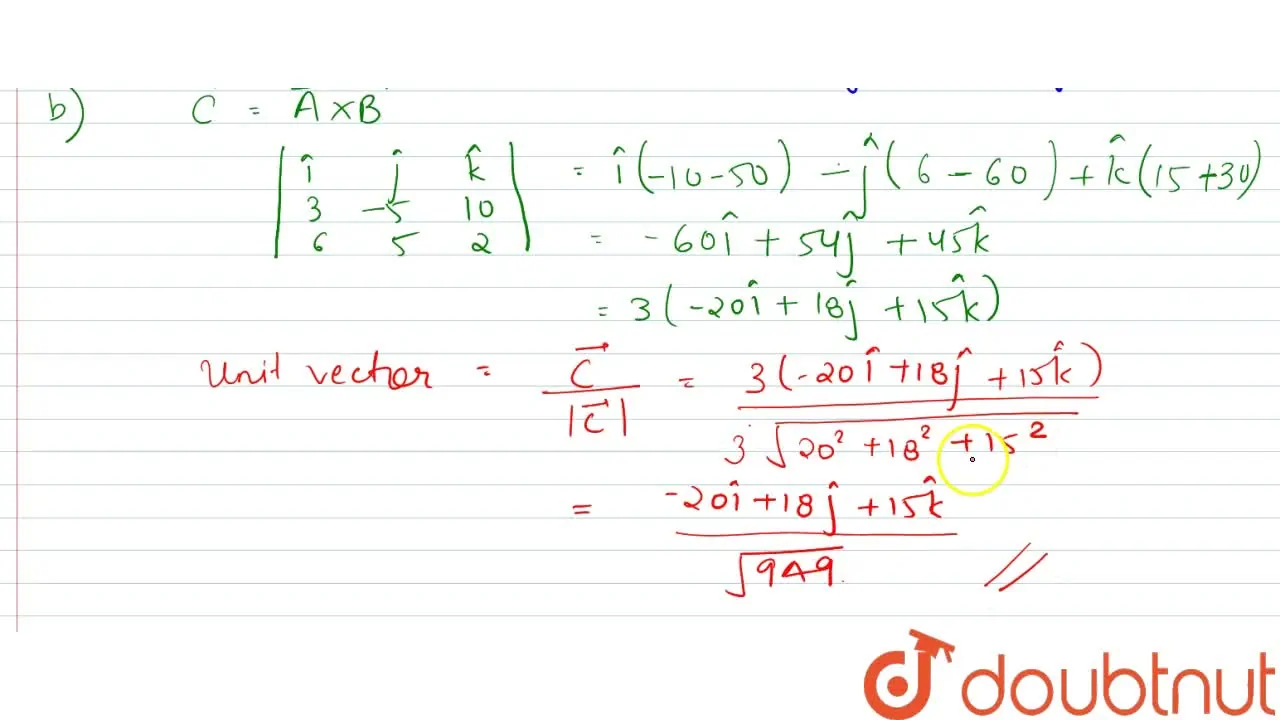a. Prove that the vector , and from a right -angled triangle.
b. Determine the unit vector parallel to the cross product of vector &
a.The given vectors will constitute a triangle only if onr of the given vector is equal to vector sum of the remaining two vectors. In the given problem,
So,the given vectors do from a triangle .This triangle will be right-angled only if the dot product of two vectors (out of the given three)is zero.
Since the dot product of and is zero,therefore,it implies that is perpendicular to .
b. The unit vector parallel to is given by
So, let us first determine
Now
Magnitude:
So,required unit vector:
Related Playlists
- BOOK - CENGAGE PHYSICS ENGLISHCHAPTER - VECTORSEXERCISE - Exercise 3.119videos
VECTORS
- BOOK - CENGAGE PHYSICS ENGLISHCHAPTER - VECTORSEXERCISE - Exercise 3.213videos
VECTORS
- BOOK - CENGAGE PHYSICS ENGLISHCHAPTER - TRAVELLING WAVESEXERCISE - Integer9videos
TRAVELLING WAVES
- BOOK - CENGAGE PHYSICS ENGLISHCHAPTER - WORK, POWER & ENERGYEXERCISE - Archives (integer)4videos
WORK, POWER & ENERGY
Similar Questions
Vector →A=ˆi+ˆj−2ˆk and →B=3ˆi+3ˆj−6ˆk are :
View SolutionFind the dot product of two vectors →A=3ˆi+2ˆj−4ˆk and →B=2ˆi−3ˆj−6ˆk.
View SolutionThe unit vactor parallel to the resultant of the vectors →A=4ˆi+3ˆj+6ˆk and →B=−ˆi+3ˆj−8ˆk is :-
View SolutionThree vectors →A=2ˆi−ˆj+ˆk,→B=ˆi−3ˆj−5ˆk, and →C=3ˆi−4ˆj−4ˆk are sides of an :
View SolutionShow that the vectors →a=3ˆi−2ˆj+ˆk, →b=ˆi−3ˆj+5ˆk, →c=2ˆi+ˆj−4ˆk form a right angled triangle.
View SolutionShow that the vectors →a=3ˆi−2ˆj+ˆk,→b=ˆi+3ˆj+5ˆk,→c=2ˆi+ˆj−4ˆk form a right angled triangle.
View SolutionFind the scalar and vector products of two vectors →A=(3ˆi−4ˆj+5ˆk)and→B=(−2ˆi+ˆj−3ˆk).
View SolutionA unit vector in the dirction of resultant vector of →A=−2ˆi+3ˆj+ˆk and →B=ˆi+2ˆj−4ˆk is
View SolutionUnit vectors perpendicular to the plane of vectors →a=2ˆ⋅i−6ˆj−3ˆk and →b=4ˆi+3ˆj−ˆk are
View SolutionShow that the vectors 2ˆi−ˆj+ˆkandˆi−3ˆj−5ˆk are at right angles.
View Solution


